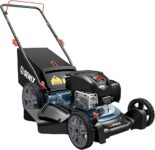
Senix Lawn Mower – 21-Inch 163cc 3-in-1 Push Mower
The Senix lawn mower is a budget-friendly 3-in-1 option with a trusted 163cc engine — offering practical performance with just a few compromise parts.
Not every homeowner needs a self-propelled, overbuilt mower. Many just want a reliable, easy-to-handle machine that makes weekly yard work quicker — especially for small to medium lawns where storage, weight, and budget matter.
The SENIX 21-Inch Gas Lawn Mower offers that compromise: a Briggs & Stratton 163cc EX675 engine, a true 3-in-1 deck (mulching, bagging, side discharge), and a 16‑gallon bagger for about $319. It’s light and straightforward to assemble, and it scores well with experts, though extensive plastic parts and a manual pull-start underline the trade-offs for the price.
SENIX 21-Inch 163cc 3-in-1 Push Mower
A practical, budget-friendly choice for homeowners with small to medium lawns who want a versatile mower that handles mulching, bagging, and side discharge. It combines a reputable Briggs & Stratton engine with an easy-to-use deck and bagger, though some plastic components and entry-level wheels temper expectations for heavy, long-term use.
Senix Push Mower Unboxing and First Run
Overview
The SENIX 21‑inch push mower is positioned for users who want more capability than a basic electric mower without the cost or maintenance of a zero‑turn or self‑propelled riding unit. It pairs a 21‑inch steel cutting deck with a Briggs & Stratton EX675 163cc 4‑stroke engine, and supports three discharge modes—mulch, bag, and side discharge—so it adapts to seasonal and lawn‑care preferences.
Design and intent
SENIX designed this mower for typical suburban lots and tighter spaces where a riding mower can’t reach. The machine prioritizes low weight and maneuverability: much of the non‑structural bodywork is thermoplastic, which keeps the overall mass down and makes it easier to push on slopes and through corners. That lightweight imprint is a tradeoff that favors ease of handling over heavy‑duty ruggedness.
Key features at a glance
Specifications table
| Specification | Detail |
|---|---|
| Cutting width | 21 inches |
| Engine | Briggs & Stratton EX675, 163cc |
| Height settings | 6 positions, 1.25″–3.75″ |
| Bagger capacity | 16 gallons |
| Weight | 54 lbs |
| Warranty | 2‑year limited |
Performance in real yards
The 163cc Briggs & Stratton engine gives the mower enough torque to chew through overgrown patches and typical summer grass blends. It is not a commercial workhorse, but it accelerates through moderately tall grass without bogging when the blade is sharp and the operator doesn’t force an overly aggressive pace. On hilly properties the mower’s light weight helps control and turning, but it also means the mower can feel less planted when tackling heavy, wet material.
Cut quality is best when mowing at a moderate walking pace and when the blade and deck are clear of clippings. Mulching works effectively for homeowners who keep a regular schedule: the included mulch plug and airflow design reduce clumping when grass is not overly long. For clean borders and tidy beds the side discharge or rear bagger produces acceptable, consistent results.
Build quality and ergonomics
The stamped steel deck is the most durable component and the central structural element that will determine the machine’s lifespan. SENIX utilizes plastic housings and fasteners for weight savings and corrosion resistance; those parts deliver convenience but are the likely candidates for wear or breakage in heavy use.
The handle folds and secures with tool‑free mechanisms for fast out‑of‑the‑box use and storage. Control ergonomics are straightforward: a single lever engages the blade and a traditional recoil start is assisted by a prime bulb. Noise and vibration are reasonable for a small gas mower; the EX675 engine runs smoother and quieter than many cheaper OHC engines.
Assembly and first‑use notes
Assembly is purposely minimal. The handle inserts and secures with wing nuts; wheels and bagger often arrive preinstalled or require only a few captive fasteners. SENIX ships a small bottle of engine oil to simplify first startup.
Recommended first steps after unboxing:
Maintenance and long‑term care
Regular maintenance keeps any small engine mower running reliably. SENIX’s model benefits when operators observe a basic service schedule: fresh oil, air filter cleaning/replacement, and blade sharpening are the most impactful tasks for continued cut quality and engine longevity. Because several components are plastic, careful storage—out of direct sun and protected from freezing—reduces stress on those parts.
Safety and user tips
Who should buy this mower
This model is optimized for homeowners with small to medium yards who value a low purchase price, a light machine that is easy to store, and common three‑mode functionality. It is particularly well suited to users who need to reach around flower beds, fences, and other obstacles where a riding mower can’t access. It’s less appropriate for large acreage, commercial use, or customers who expect heavy‑duty hardware in every component.
Comparisons and common alternatives
In this price and feature bracket the core competitors are other stamped‑deck, 21‑inch push mowers with engines in the 140–170cc range. SENIX stands out by pairing a name‑brand Briggs & Stratton engine with an included bagger and a 2‑year warranty; however, competitors may offer heavier steel components or metal wheel hubs for a premium price.
What’s in the box
Bottom line
The SENIX 21‑inch gas mower is a sensible, well‑rounded option for a budget‑minded homeowner who needs a competent, easy‑to‑use mower for routine lawn maintenance. It balances power, convenience, and included accessories in a package that favors maneuverability and affordability over commercial‑grade robustness.

FAQs
For typical suburban lawns the blade should be inspected and sharpened every 20–30 hours of mowing, or once per mowing season. If the mower is slicing through thicker weeds, small branches, or sandy soil, check and sharpen it more frequently to avoid tearing the grass and overworking the engine.
Mulching wet grass is not recommended. Wet clippings tend to clump and can smother turf beneath the mower; they also increase resistance and can bog the engine. Wait until the grass is dry or use the side discharge or bagger if mowing after rainfall.
A 16‑gallon bagger is adequate for small to medium yards and for routine mowing. If the grass is tall or you have large leafy debris, expect to empty it more often. For frequent heavy loads, plan for more bagging trips or use side discharge to avoid frequent stops.
Most users report a reasonable pull that starts the engine in a few tries once primed. As with any manual start, it becomes easier when the engine is warm and the operator follows proper priming and choke procedures. No electric start option is available on this model.
Yes—its light weight and wheel configuration make it manageable on moderate slopes and uneven terrain, but caution is required. For steep slopes, a rider or self‑propelled walk‑behind with greater traction may be safer and less tiring.
Before storing for winter, run the tank dry or add fuel stabilizer, change the oil if needed, clean the deck and undercarriage, remove the battery if applicable (not applicable here), and store the mower in a dry sheltered area to protect plastic components and prevent corrosion.









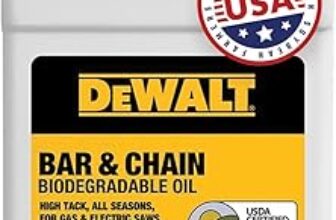
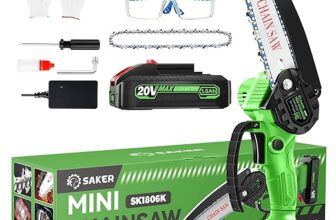
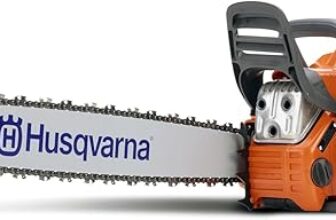
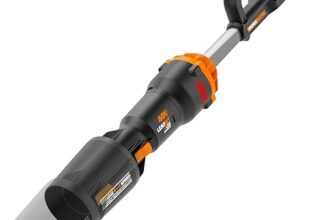

Assembly took me longer than expected. The instructions were okay but some of the plastic clips felt a bit fragile.
I like the mulching option though — clippings break down nicely. Wheels are kind of entry-level, so if you have rough terrain they might not last forever.
Overall I’m satisfied for the price, but anyone with bigger yards or rocky ground should be cautious.
Good tip — thanks. I was worried about drilling or voiding warranty though.
I used M6x12 stainless bolts with lock nuts, cheap fix from the hardware store. Worked fine for me.
Do you remember which bolts you used? I might do the same — hate the idea of a part failing mid-season.
Same here on the clips. I swapped a couple for metal bolts which felt more secure. Not ideal but solved the wobble.
Thanks for the detailed take, Michael. We noted in the review that several components are plastic and the wheels are more ‘entry-level’ — glad you called that out from assembly experience.
The plastic catcher frame felt flimsy on mine and one of the clips cracked after a month. The engine is okay but I expected better build quality for a gas mower.
Not terrible, but not great either.
Sorry to hear that, Olivia. We mentioned the plastic components as a trade-off for the lower price point. If it cracked that soon you might check return options or aftermarket replacements.
I had a cracked clip too but Amazon sent a replacement part quickly. YMMV.
Quick question for anyone who owns this: how’s the parts availability and warranty? Article mentions entry-level components and I’m cautious about long-term support.
Thanks — that helps with the decision.
Engine parts easy to find. For brand-specific plastic trim, you’ll probably rely on the merchant or aftermarket sellers.
Good question. SENIX offers a basic warranty and replacement parts are often available through Amazon or third-party suppliers. The Briggs & Stratton engine parts are widely available, which helps.
I’ve had mine for 9 months now. The wheels started to wobble a bit and one of the deck clips broke (ugh). Typos aside, I expected better longevity tbh 😕
Still, the cut is clean and the engine keeps going. For the price it’s meh — not bad, not great. Wouldn’t call it ‘professional’ by any means. 😅
Did you replace the wheels or tighten them? Might be a loose axle or a worn bearing.
Good to know there are aftermarket fixes — helps extend life without buying new mower.
I tightened stuff and ordered reinforced wheels from an aftermarket seller. Better now.
Thanks for the follow-up, Carlos. Your experience matches the review’s takeaway: good performance for homeowners but some durability compromises.
Bought this because my lawn turned into a jungle. The SENIX did a decent job — not a miracle worker but it cleared a lot. 😂
Two things:
1) The height adjustments are handy, though sometimes the lever is stiff.
2) The wheels — again, not the tank.
Would recommend for small-medium yards.
Stiff lever fixed up after a little lubrication for me. WD-40 at the pivot did the trick.
Haha love the ‘jungle’ reference. Good to know the height lever can be stiff — we saw that in testing too during the first few uses.
Thanks — I’ll try that. Wanted to avoid forcing it and breaking something.
I actually bought this on a whim after reading the review. For $319 it’s a solid deal — the Briggs & Stratton 163cc feels peppy and the 21-inch deck gets my backyard done in one pass. Bagging works well and the 16-gallon bag is plenty for my modest lawn.
Glad it worked out for you, Emily — that’s exactly the kind of homeowner this mower was targeted toward. Thanks for sharing real-world experience!
Starts first or second pull usually. I keep fresh fuel and a clean air filter and haven’t had issues.
Good to hear — thinking of getting one myself. How’s the starting pull? Any finicky carb issues?
The 16-gallon bagger is surprisingly roomy. I can do about 1/3 acre without emptying when on mulching setting it’s even better. Slightly heavy to push uphill with a full bag though.
If you have inclines, plan your runs differently.
Does the mower feel stable with a full bag? Any tipping issues?
I just mulch most of the time now to avoid hauling a heavy bag. Saves time too.
Stable for me, but I keep the bag off the highest setting when climbing. No tipping but it’s heavier.
Great practical tip — the bag does fill up and the push effort increases. We recommended shorter passes on slopes in the review for that reason.
This mower is light enough for me to push easily (I’m 5’4″), so if anyone’s worried about heavy gas mowers — this one is pretty manageable. 👍
Good to hear, Fiona. Weight and maneuverability were part of why we recommended it for small to medium yards.
Same — I’m glad it didn’t feel like a workout every pass.
I wanted to share a longer note for folks weighing the mulching vs bagging decision:
– Mulching: saves time, great for healthy lawns, cuts down on trips to the compost.
– Bagging: cleaner look, better if you have tall weeds or lots of thatch.
The adjustment points on this mower make switching straightforward, but I found the blade change a little awkward the first time. Worth the effort though — mulching has made my lawn look better in just a couple of weeks.
Mulcher blades do make a difference. They’re thicker and hold up better when mowing slightly taller grass.
Did you use the OEM blade or an aftermarket mulching blade?
Agree — I’ll report back after I swap in one.
Still using OEM for now. Might try a dedicated mulcher blade next season.
Excellent breakdown, Laura. We tried to cover those exact trade-offs in the article. The blade access can feel cramped — good to be prepared.
I was worried about emissions and noise (I live in a row of houses). It’s loud enough to notice but not obnoxious. I wish there was a quieter option but that’s probably fair for the price.
Also, had a hiccup starting once when it rained—might be my fuel though.
I cover the spark area when storing during wet weather. Keeps things behaving.
If you suspect water in the fuel, drain and replace it. Ethanol blends can absorb moisture.
Good points, Priya. We noted the noise level in the review as average for a gas push mower. For rain-related starts, letting the engine dry and using fresh fuel can help.
Thanks — I’ll try storing it in a covered spot more consistently.
At $319 this is hard to beat for the features. 3-in-1, 163cc engine, 16-gallon bagger — pretty full of value.
Do you think it’s worth it over a cordless model? I’m torn.
Pricing was one of the strongest arguments in the review. Glad you see the value.
As someone who tinkers with small engines: the B&S EX675 is a decent choice for a budget mower. Solid power curve and parts are widely available. Don’t expect Honda-level longevity but it’s reliable with basic maintenance.
Do you recommend any specific oil type or interval for the first season?